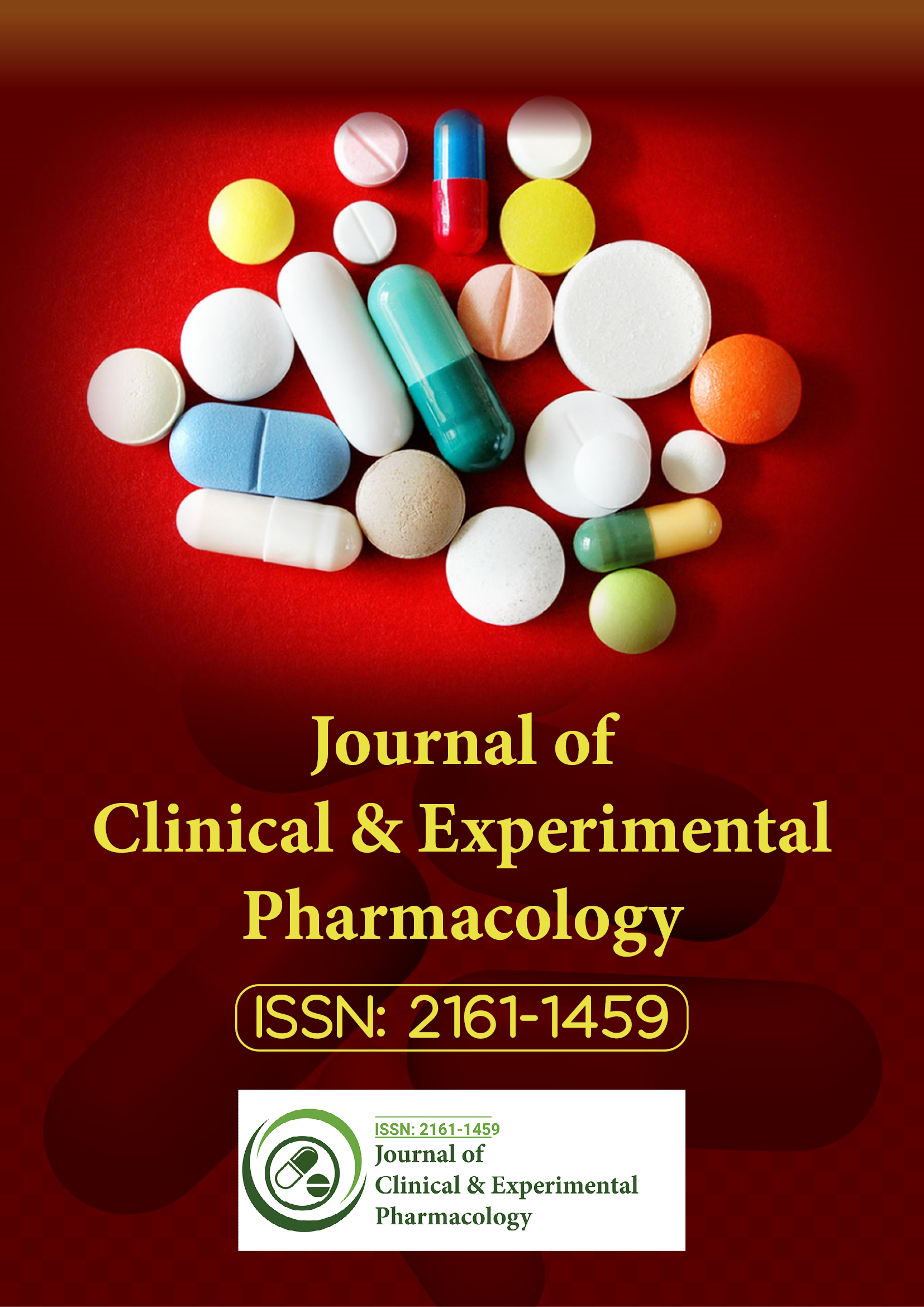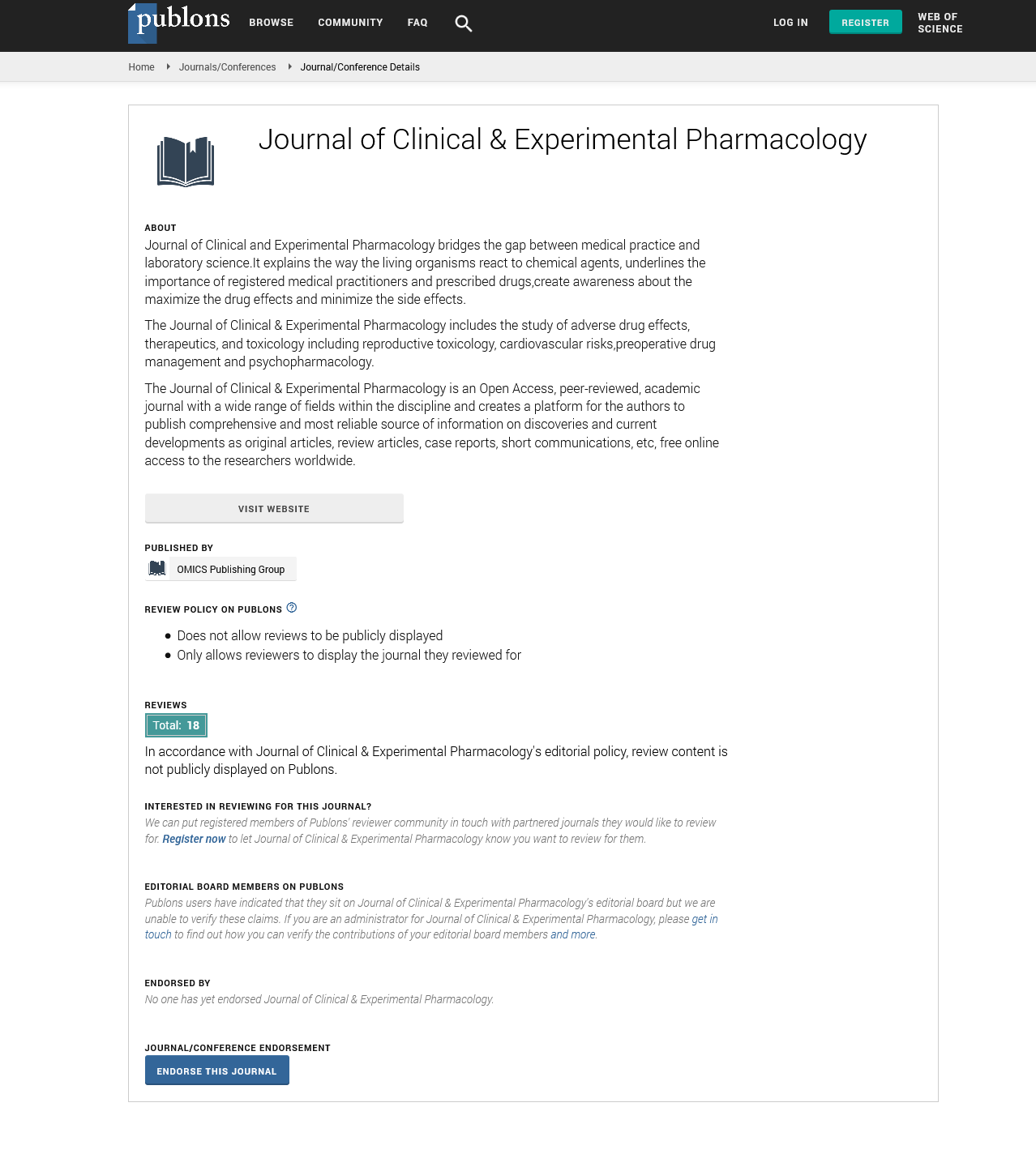Indexed In
- Open J Gate
- Genamics JournalSeek
- China National Knowledge Infrastructure (CNKI)
- Ulrich's Periodicals Directory
- RefSeek
- Hamdard University
- EBSCO A-Z
- OCLC- WorldCat
- Publons
- Google Scholar
Useful Links
Share This Page
Journal Flyer

Open Access Journals
- Agri and Aquaculture
- Biochemistry
- Bioinformatics & Systems Biology
- Business & Management
- Chemistry
- Clinical Sciences
- Engineering
- Food & Nutrition
- General Science
- Genetics & Molecular Biology
- Immunology & Microbiology
- Medical Sciences
- Neuroscience & Psychology
- Nursing & Health Care
- Pharmaceutical Sciences
Opinion Article - (2025) Volume 15, Issue 1
Pharmacokinetic and Toxicological Considerations: Current Limitations
Olivia Brooks*Received: 29-Jan-2025 Editor assigned: 31-Jan-2025 Reviewed: 14-Feb-2025 Revised: 21-Feb-2025 Published: 28-Feb-2025, DOI: 10.35248/2161-1459.25.15.462
Description
The growing threat of Antimicrobial Resistance (AMR) represents one of the most pressing public health challenges of the 21st century. As Multidrug-Resistant (MDR) and Extensively Drug-Resistant (XDR) bacteria continue to compromise the efficacy of existing antibiotics, there is an urgent need to explore novel compounds with antimicrobial potential, particularly those derived from natural sources. One such promising compound is carvacrol, a phenolic monoterpenoid found in essential oils of plants like oregano and thyme. Its broad-spectrum antimicrobial activity and natural origin have generated considerable interest in the context of drug-resistant bacterial infections.
Carvacrol's mode of action is distinct from that of traditional antibiotics, making it a compelling candidate for further development. Its primary mechanism involves the disruption of the bacterial cell membrane. By integrating into the lipid bilayer, carvacrol alters membrane permeability, causes leakage of cellular contents and ultimately leads to cell lysis. This physical disruption contrasts with the target-specific mechanisms of conventional antibiotics, which often allow bacteria to evolve resistance through target modifications or efflux pump upregulation. Membrane-targeting agents like carvacrol present a more generalized attack that bacteria may find more difficult to counteract.
Recent studies have demonstrated carvacrol’s potent effects against drug-resistant pathogens, including methicillin-resistant Staphylococcus aureus, carbapenem-resistant Acinetobacter baumannii and Extended-Spectrum Beta-Lactamase (ESBL) producing Escherichia coli. In vitro assays reveal that carvacrol exhibits a concentration-dependent bactericidal effect, often synergistic when combined with traditional antibiotics. For example, co-administration of carvacrol with gentamicin or ciprofloxacin has been shown to significantly reduce the Minimum Inhibitory Concentrations (MICs) required, suggesting a potentiating effect that could revive the efficacy of drugs otherwise rendered ineffective.
Beyond membrane disruption, carvacrol may also interfere with key cellular processes. It has been reported to impair ATP production and enzyme activity, induce oxidative stress by promoting Reactive Oxygen Species (ROS) generation and inhibit biofilm formation—a critical virulence factor in chronic and resistant infections. The ability to inhibit biofilms is especially noteworthy because biofilm-associated bacteria are notoriously resilient to antibiotic treatment and immune clearance. By disrupting quorum sensing and suppressing the expression of biofilm-related genes, carvacrol shows potential in dismantling these defensive structures.
Despite these encouraging findings, there are several considerations that temper the immediate clinical application of carvacrol. Firstly, while effective in vitro, the pharmacokinetics and systemic bioavailability of carvacrol in vivo remain underexplored. Rapid metabolism and poor water solubility may limit its therapeutic utility unless appropriate delivery systems are developed. Nanoparticle encapsulation, liposomal formulations and other drug delivery innovations are being explored to enhance its stability and targeted delivery. Secondly, toxicity profiles need to be more clearly delineated. While generally regarded as safe in food applications, therapeutic doses may exert cytotoxic effects on host tissues if not properly controlled.
Moreover, the regulatory path for natural compounds like carvacrol remains uncertain. Bridging the gap between promising laboratory results and approved clinical use will require rigorous clinical trials, standardized formulation protocols and toxicological assessments. However, its generally recognized as safe status by the FDA provides a favorable starting point for translational research.
From a public health and sustainability perspective, carvacrol represents an opportunity to diversify our antimicrobial arsenal using plant-derived compounds. Its broad mechanism of action could complement existing antibiotics, reduce selection pressure and help slow the progression of resistance. Additionally, its natural abundance and low production cost make it an attractive candidate for use in low- and middle-income countries where access to advanced antibiotics is limited.
In conclusion, carvacrol is more than just a natural antimicrobial—it embodies a broader shift in the search for solutions to antimicrobial resistance, emphasizing synergy, sustainability and systems-based approaches. While challenges remain in formulation, delivery and clinical validation, the evidence thus far suggests that carvacrol deserves a prominent place in the next generation of antimicrobial strategies. Continued interdisciplinary collaboration between microbiologists, pharmacologists and clinical researchers will be essential to fully unlock its therapeutic potential and integrate it into mainstream infection control shifts.
Citation: Brooks O (2025). Pharmacokinetic and Toxicological Considerations: Current Limitations. J Clin Exp Pharmacol. 15:462.
Copyright: © 2025 Brooks O. This is an open-access article distributed under the terms of the Creative Commons Attribution License, which permits unrestricted use, distribution and reproduction in any medium, provided the original author and source are credited.

